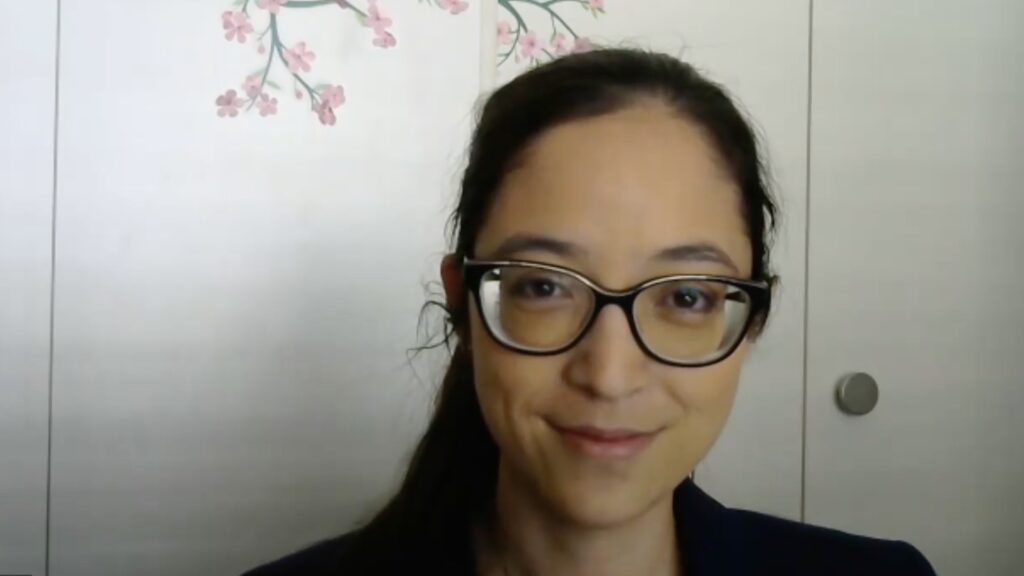Janus kinase inhibitors (JAKis) are an emerging new class of disease-modifying medication for the treatment of rheumatoid arthritis (RA). touchIMMUNOLOGY spoke with our Editor-in-Chief Prof Peter Taylor (University of Oxford, UK) to discuss the latest insights into the use, selectivity and safety of JAK inhibitors, and how they are used to target the pathophysiology of RA.
Questions
- Could you briefly summarise how JAK inhibitors (JAKi) target the pathophysiology of rheumatoid arthritis? (00:14)
- What do we currently know about JAKi selectivity and safety? (01:06)
- Could you tell us about any known risk factors associated with using JAKi and how could risk be minimised when prescribing in the clinic? (02:55)
- In your opinion, what further research is needed, and are there any studies currently ongoing? (06:51)
Disclosures: Peter Taylor is a consultant for AbbVie, Galapagos, Lilly and Pfizer, and has received university grant/research support from Galapagos.
Support: Interview and filming supported by Touch Medical Media Ltd. Interview conducted by Sophie Nickelson.
Filmed in coverage of the European Alliance of Associations for Rheumatology (EULAR) Annual Meeting
Click here for more content from EULAR.
Transcript
Hello. My name’s Peter Taylor, Professor of Musculoskeletal Sciences at the University of Oxford. It’s a real pleasure to join you today.
Could you briefly summarize how JAK inhibitors (JAKi) target the pathophysiology of rheumatoid arthritis? (00:14)
How do JAK inhibitors target the pathophysiology of rheumatoid arthritis? We’ve known for many years that there are multiple cytokines involved in the pathophysiology of rheumatoid arthritis, and a subfamily of these cytokines actually signal through the agency of the Janus kinase enzymes. These include, for example, the interferons, IL-6, and GM-CSF. And what the Janus kinase inhibitors do is to prevent the dephosphorylation of ATP and, by doing that, they prevent the phosphorylation of STAT proteins and this stops the signaling capability of the various cytokines that are involved in the pathophysiology.
What do we currently know about JAKi selectivity and safety? (01:05)
We have four JAK inhibitors available in Europe at the present time, and they’re all very different pharmacologically. All four inhibitors actually work by competitive inhibition of ATP dephosphorylation by JAK enzymes and there are four JAK enzymes in the family and they tend to work in pairs. Now it’s possible to look at the selectivity of a particular Janus kinase inhibitor in two different ways. You can look in enzymatic assays where you simply add a JAK inhibitor to a test tube as it were that contains the substrates, the STATs, and also ATP and the Janus kinase enzyme and see how much you require to inhibit particular Janus kinase enzymes. And this will give you one measure of selectivity. But another way of doing it that’s perhaps more relevant biologically is to look in cellular assays. And here you could take whole blood or particular groups of immune cells and look at the degree of inhibition of any one of the four Janus kinase enzymes in that particular circumstance, and that might give a very different pattern of selectivity to what you might observe in an enzymatic assay. So we have two of the JAK inhibitors that are relatively selective for Janus kinase 1, filgotinib is said to be a preferential JAK1 inhibitor, upadacitinib is relatively selective for Janus kinase 1, baricitinib is a JAK1/2 inhibitor and tofacitinib is predominantly a JAK1 and JAK3 inhibitor.
Could you tell us about any known risk factors associated with using JAKis, and how could risk be minimized when prescribing in the clinic? (02:54)
When new drugs become available for the treatments of any disease, looking at the issue of risks associated with medication is actually quite a complex affair because clinical trials are designed primarily to ascertain the level of efficacy of a particular drug and there were powered in order to do so. But to look for any associations between any risk and the drug will depend on how frequently the risk occurs. And if it’s a very frequent risk, you might pick it up in clinical trials, but if it’s a rare event, the clinical trials won’t be powered to do that. So in order to actually investigate risk of any new drug, we need two different types of data. We need clinical trial data which provides very granular outcomes, and we also need real world data, which can provide much bigger numbers, but tends to be rather noisier and less granular than the clinical trial data. So to summarize what we have found with JAK inhibition with the four JAK inhibitors that are used in clinical trials of the common side effects, we find non-serious infections and by common, I mean, somewhere between 1 in 10 to 1 in 100. We’ve also noted that all the JAK inhibitors can increase the likelihood of reactivation of herpes zoster. And this is probably because they inhibit the interferon signaling pathway. But again, this is generally non-serious, monodermatomal zoster. It happens a little bit more frequently in some populations from Asia, particularly from Japan, Korea and Taiwan. And then there are very much rarer associations, and it’s very difficult to know with certainty whether there is any causality related. Now there has been a well-publicized trial that was powered to assess any relative risk difference between anti-TNF and one of the JAK inhibitors called tofacitinib, this was the ORAL surveillance study, and this was a study in patients aged 50 years or over who were at risk of cardiovascular problems and had at least one baseline cardiovascular risk. And after many years of this study running with many thousands of patients recruited, it turned out that the relative risk of venous thrombotic event was increased with tofacitinib versus anti-TNF. The relative risk of serious infection of certain malignancies and of cardiovascular events were increased, but the latter three were not statistically significantly different. So it’s very difficult again to know whether there’s a truly causal relationship between JAK inhibitor and any of those events or whether indeed both JAK inhibitors and anti-TNF are actually cardioprotective, but one more so than the other, these are things that need to be further explored. But what is absolutely clear is that if patients are over 65 years of age, and have been significant smokers, then these are the patients that comprise about 85% or more of those who are at apparently increased relative risk of cardiovascular events and also for malignancy, which was primarily pulmonary malignancy, which of course is also related to smoking. If on the other hand you take patients who are younger without a smoking history, then there is essentially no difference in the risk levels between anti-TNF and tofacitinib over about the first two years of drug exposure. So this is an area of active investigation and many real world studies have been looking at this further.
In your opinion, what further research is needed, and are there any studies currently ongoing? (06:51)
Having explained that when you look at the risk for adverse events, and any association with a drug, this is a very difficult thing to do because you need to power studies adequately. We have had some evidence from a study that was enriched for patients with baseline cardiovascular risk and who were 50 years of age or older. And that study, the ORAL surveillance study, in fact, showed a relative risk increase for tofacitinib versus anti-TNF for a number of adverse events of special interest. But in most cases, they didn’t meet statistically significant difference. And just to put some perspective on this, if you were to look for one additional major adverse cardiovascular event over the first year of exposure comparing the two different classes of drug, you’d need to treat over 530 patients to see one difference. And so this just illustrates how difficult it is to study these issues.
Therefore, to look further and in more detail we really need to have very large numbers of patients and we need to understand how these large numbers of patients are responding in a real world context of everyday clinical practice. And there have been a number of studies that have already been reported and others that are ongoing that are looking at these huge numbers of patients. One of these is the JAKPOT study which is looking at registries from 14 different countries and they’ve recruited over 15,000 patients in all, over 2,000 patients on JAK inhibitors to date. And in fact, in that study, there was no apparent relative risk difference that was statistically significant between JAK inhibitors and anti-TNFs or indeed between JAK inhibitors and other mechanism of action drugs. And in fact numerically, the drugs that were associated with the highest risk of adverse events were the other mechanism of action drugs, but this was not statistically significantly different.
There have been other studies as well. There was a study looking at the Dutch registry, for example, that looks at a very large number of patients, and they also found no relative risk differences between anti-TNFs and JAK inhibitors when they were initiated de novo. But if you look at baseline criteria in these observational studies that reflect the eligibility criteria for the ORAL surveillance clinical trial then you find that in fact the risk rate increases but for both treatment arms. So in other words, if you are at background risk of cardiovascular events, if you’ve had a prior cardiovascular event, if you’ve been a heavy smoker or if you’re over 65 years of age, then that enriches for your likelihood of having a further event, irrespective of which drug treatment you have. But it is also apparent that one of the major culprits for contributing to cardiovascular risk but also VTE risk and malignancy is inflammation itself. And if we optimally suppress inflammation with efficacious drugs, this seems to decrease risk.
This also has been confirmed in a number of large observational studies, the CorEvitas study, the JAKPOT study, the Dutch study that was presented at EULAR Milan that I just referred to and a very interesting study from Korea where they looked at a huge number of patients and in fact they found that inflammation was the major driver to adverse events and where inflammation was suppressed, that actually decreased the rate of adverse events. So they compared JAK inhibitors, and biologic drugs, with patients on conventional synthetic DMARDs who had not achieved such good disease control and the conclusion was that the better the disease control that actually the less likelihood there is of having adverse events of special interest. But there is a little caveat though. And that is that there were still numerically higher numbers of certain malignancies in that Korean population and particularly lung and prostate. There’s no proven causal relationship to JAK inhibitors but nonetheless these observations of rare events where it’s difficult to ascribe causality require further investigation.












